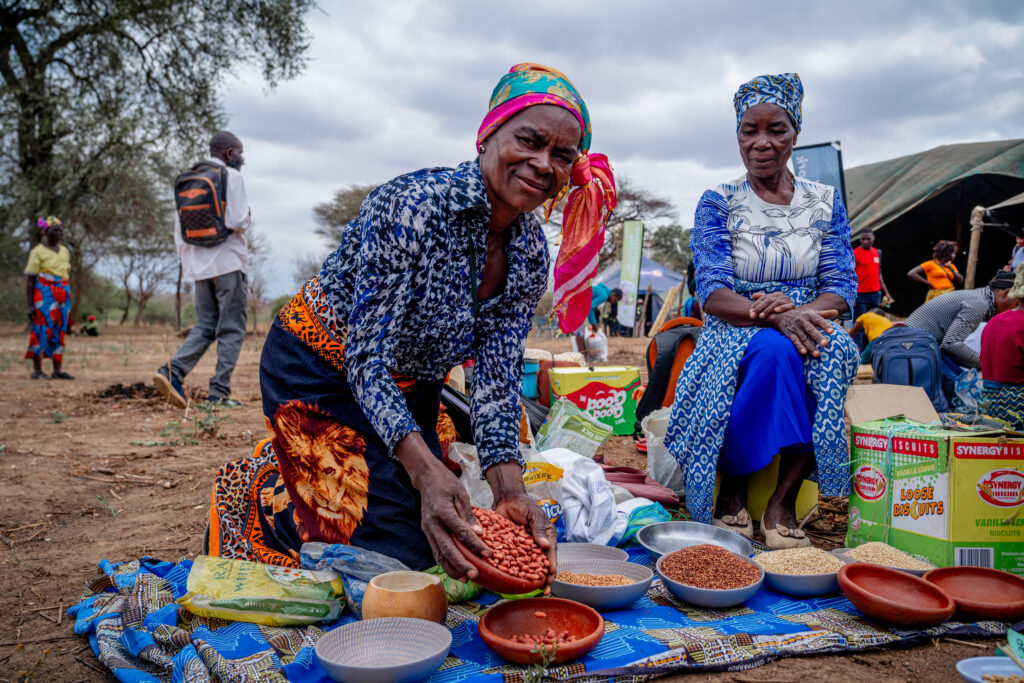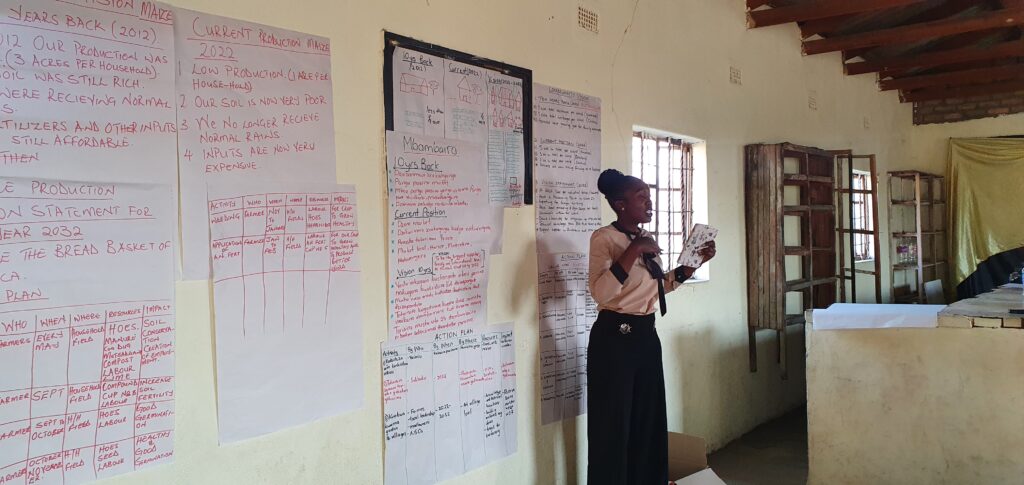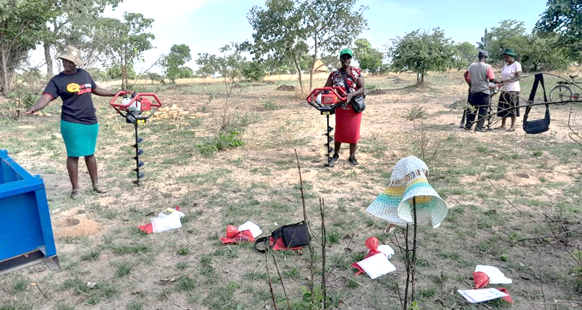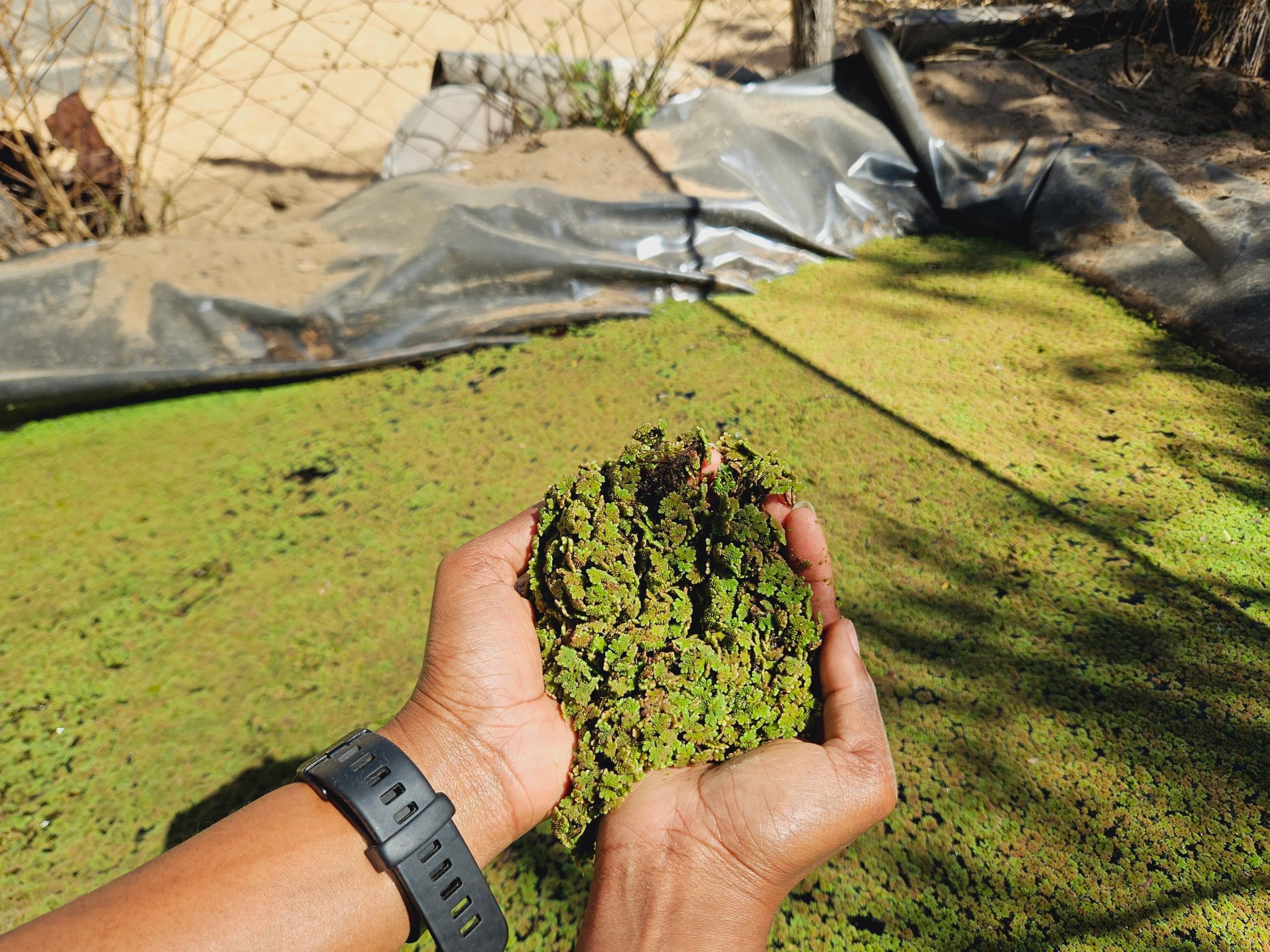Advancing gender and social inclusion in agroecology: Insights from the CGIAR Agroecology Initiative in Zimbabwe

Agriculture lies at the core of rural livelihoods, yet longstanding social inequities have stifled the potential of marginalized groups– particularly women and youth– to fully benefit. The CGIAR Agroecology Initiative (AE-I) recognizes gender and social inclusion as critical pillars in achieving sustainable agricultural transformation. By embedding these aspects within its framework, AE-I ensures that marginalized groups—especially women and youth—play a meaningful role in agroecology transitions.
Current realities on women and youth in agriculture
Women and youth are central to Zimbabwe’s agricultural economy, yet they remain underrepresented or excluded in decision-making processes and face barriers to accessing critical resources. Globally, women make up about 48% of the agricultural labor force in Sub-Saharan Africa (World Bank, 2024), yet they consistently face challenges in accessing land, credit, and markets. In Zimbabwe, these disparities are even more pronounced. In Mbire and Murehwa districts, rural economic activities, including agriculture, rely heavily on women and youth. Women make up approximately 70% of the agricultural labor force (UNDP, 2024) in these regions, but they often lack control over resources needed to enhance productivity and economic stability such as land, credit, and markets.
Agroecology Living Landscapes and Gender and Social Inclusion Matter
Embedding gender and social inclusion (GESI) into agroecology is not just a moral imperative but a foundational requirement for achieving lasting and transformative impact. Traditional top-down development approaches have often neglected marginalized groups’ unique needs and contributions, resulting in unsustainable outcomes. In contrast, the AE-I prioritizes inclusive and participatory processes, exemplified by its Agroecology Living Landscapes (ALLs), which serve as collaborative spaces where community members actively co-create locally relevant solutions.
Central to the CGIAR Agroecology Initiative (AE-I) is a commitment to “do no harm—say no harm,” ensuring that the inclusion of women, youth, and other marginalized groups is safe, meaningful, and impactful. Including marginalized groups can disrupt existing power structures and opportunity hierarchies, so it must be done with contextual sensitivity. Young and old women are provided equal opportunities to participate in and contribute to the co-creation of innovations. However, systemic barriers-such as limited agency or entrenched gender norms-continue to hinder meaningful engagement. To address these challenges, AE-I collaborates with key stakeholders, such as the Ministry of Women Affairs, Community, Small and Medium Enterprises Development (MWACSMED), to advocate for gender mainstreaming. Concrete actions have included training programs, documentation of gender norms and their impacts, elevating women and youth role models, and ensuring equal participation in ALL activities. MWACSMED has evolved into a proactive stakeholder in this process. Initially a passive participant in ALL discussions, the ministry now plays a leadership role in addressing gender and social inclusion issues within the landscapes. This deliberate attention to GESI within ALLs has illuminated systemic barriers such as unequal access to resources, rigid cultural norms, and the exclusion of certain social groups.

Agroecology recognizes that inclusion is not merely about representation but about fostering environments where meaningful transformation can happen. For instance, cultural norms often limit the participation of women and youth in mixed-group activities. To address this, the AE-I initiated monthly “dialogues with elders,” engaging traditional authorities and community leaders to reconcile cultural traditions with transformative gender and social inclusion goals. These dialogues have yielded positive shifts in such perspectives. As one elder participant noted, “We value inputs from women and acknowledge their critical role in our community.”
The transformative impacts of AE-I’s inclusive approach are increasingly visible. Across Murehwa and Mbire districts, Agroecology Living Landscapes (ALLs) are reshaping community dynamics by empowering previously marginalized groups, such as elderly women, to contribute to agricultural innovation. Within some of the activities of the Initiative, women and youth engagement is quite impressive, with over 60% of participants in seed fairs and field days. These figures highlight the significant potential for expanding women’s and youth’s opportunities to advance agroecological goals through gender- and youth-focused interventions. It also demonstrates their eagerness to engage in knowledge-sharing opportunities. Such initiatives improve livelihoods and build women’s and youths’ agency as active contributors to agricultural innovations.
Inclusivity within ALLs is further is reinforced by low barriers to entry, emphasizing a willingness to learn and transform their crop and livestock production rather than asset ownership. This approach has expanded participation among resource-poor farmers, breaking down traditional exclusionary practices brought by other Donor programs.
As one farmer remarked, “In the past, only those with cattle or fenced homesteads could join such programs on transformative change. Now, even those of us without such assets can participate.”
Such practices have strengthened the confidence of marginalized farmers, enabling them to navigate complex production dynamics collectively.
Building Economic Independence and Transforming Food Systems
The AE-I’s focus on inclusive value chains has begun to yield tangible economic benefits. In Mbire and Murehwa, women are transitioning from subsistence farming to economic independence by engaging in agroecological business models. For example, Sasso poultry farming has become a viable income-generating activity, allowing women to reinvest in their farm-level activities. Youth are also leveraging their involvement in agriculture to build assets, diversify income and nutritional sources, and secure a more stable future.
A critical challenge remains exploitative market dynamics that limit farmers profitability. Farmers have raised concerns about the informal urban markets, where asymmetric power dynamics and a lack of competitive pricing mechanisms enable buyers to dictate unfavorable prices. Middlemen in the poultry markets suppress prices by 40%, while unstructured sorghum buyers pay 20–30% below market rates, eroding farmers’ profitability.
Addressing these bottlenecks through cooperative-led marketing, digital trading platforms (e.g., Hamara App), and guaranteed off-take agreements ensures equitable economic participation and a resilient food system.
Drudgery and Women in Agri-Food Systems
The transition to agroecology offers both opportunities and challenges, particularly for women, who bear the brunt of agricultural labor. In many rural communities, women are responsible for labor-intensive activities, including land preparation, weeding, and post-harvest handling.
While agroecological practices promote sustainability and resilience, some approaches—such as conservation agriculture—can initially increase women’s workload, exacerbating drudgery and limiting their time for other economic or social activities.
To ensure that agroecology transitions are both equitable and scalable, it is essential to integrate appropriate-scale mechanization that reduces labor burdens while maintaining ecological integrity. By embedding gender-responsive technologies into agroecological systems, AE-I can foster inclusive, productive and sustainable farming solutions.

To address this, the Initiative has facilitated the adoption of labor-saving technologies, improving access to mechanized solutions that ease women’s workload. In Mbire and Murehwa districts, 43 out of 95 women farmers now have access to basin diggers, significantly reducing the effort required to establish planting basins in conservation agriculture. Additionally, four multigrain threshers have been introduced in each district, enabling women to process small grain cereals more efficiently, cutting down the time spent on post-harvest handling.
These innovations not only alleviate physical strain but also increase productivity, allowing women to participate in value-added activities and play a greater role in decision-making processes within the food system.
By prioritizing appropriate-scale mechanization, the AE-I ensures that agroecology transitions foster inclusivity, sustainability, and economic empowerment for women farmers.
Wrap up
The CGIAR Agroecology Initiative’s work in Mbire and Murehwa provides a step forward for centering gender and social inclusion into agricultural development. Through participatory methods, inclusive partnerships, and a focus on actor agency and opportunity for behavior change, the Initiative has redefined what it means to build sustainable and equitable food systems. For donors, partners, and other stakeholders, the AE-I offers a compelling case for investing in inclusive approaches that transform agriculture and uplift entire communities. As agroecology continues to evolve, centering gender and social inclusion will remain vital for achieving sustainable, impactful outcomes.








